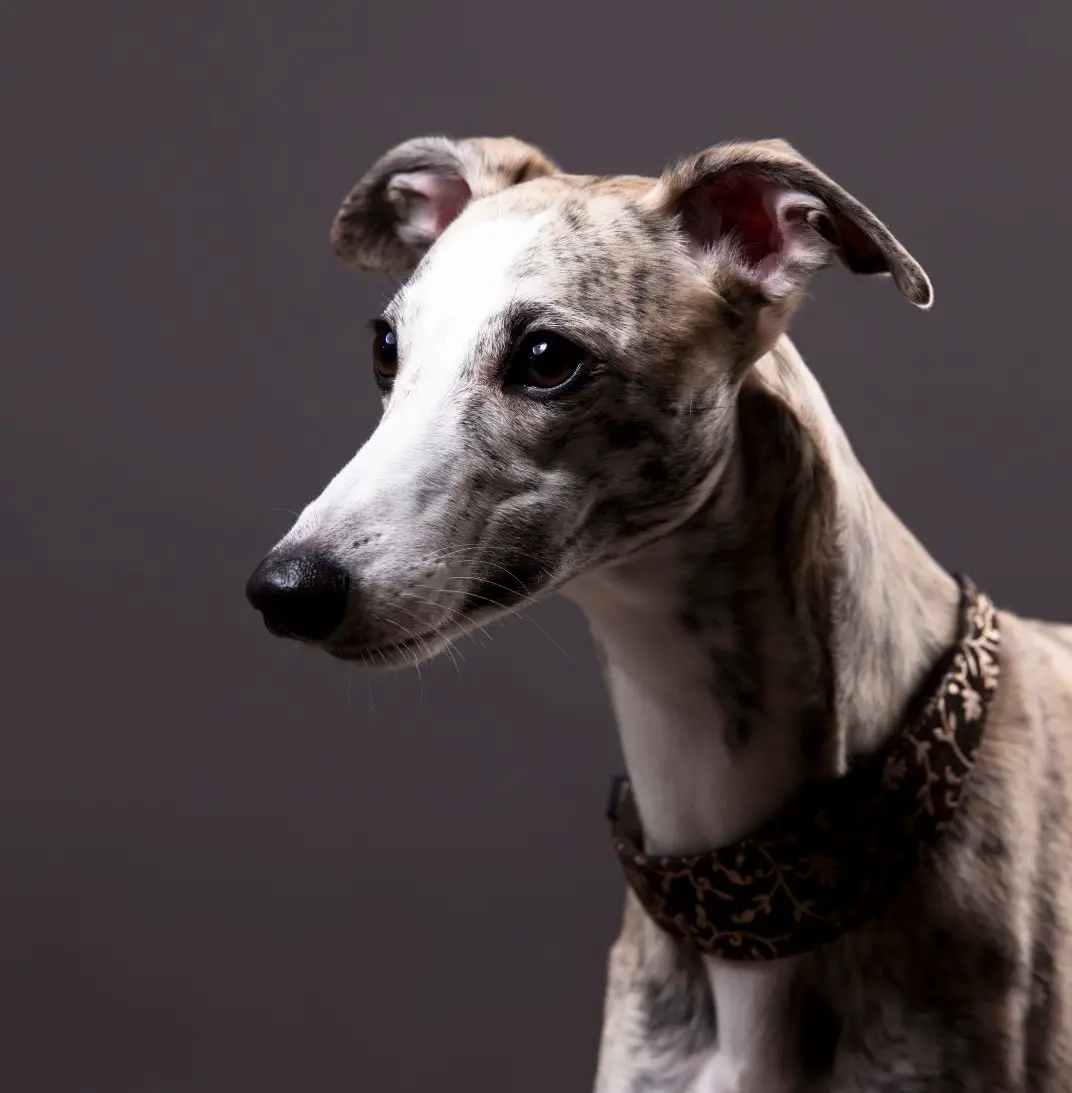
Whippet Breed Profile
These lightning fast dogs are gaining in popularity across the UK due to their affectionate nature and being an ideal size for smaller homes.
- Family Friendly
- 10-14 Years
- Intelligent
Jump to Whippet information
Whats the Whippet's history and background?
This northern favourite has experienced a recent resurgence in popularity among millennials in the UK due to its small size, low shedding coat, and an aversion to barking. Although this breed loves stretching its legs, they are surprisingly happy curling up on the sofa for the rest of their day.
Whippets are an old English breed from the middle ages that are close relatives of the Greyhound. That being said, smaller, Greyhound type breeds have been seen in history all the way back to Egyptian times, showing the versatility and popularity of this breed. Whippets, or at least a breed with similar features and stature, were the chosen dogs of Egyptian kings who used the dog’s speed for hunting game. Although up for debate, most people accept that the dog we recognise today as a Whippet was first bred during England’s Medieval period. The dogs were carefully selectively bred from their Greyhound cousins, but with petite and more agile frames, excellent for chasing smaller game such as rabbits in the English countryside.
During the late 19th century the breed started to gain popularity as a racing dog in parts of northern England and Wales, however they were looked down upon across the rest of the UK and viewed as “a poor man’s Greyhound” . The name “Whippet” derives from an Old English word that translates as “quickly moving little dog” and the breed has the highest running speed of breeds of its weight and is the fastest accelerating dog breed. The Kennel Club formerly recognised the Whippet in 1891, granting it permission to enter shows competitions, which is where the popularity of the breed took off, with breeders exporting the dog all over the world, not only as a racing dog, but also a companion dog.
During the early 1900s there were two variations of the Whippet, a short haired one, popular in the north east, north west and midlands which we recognise as the modern Whippet. The second had a longer, more coarse coat due to cross breeding with Bedlington Terriers and were known as the “rough haired Whippet” or sometimes “a rabbit dog”.
What's the Whippet's Behaviour & Personality like?
- Whippets are great companion dogs and exceptionally gentle and loving. They love nothing more than laying on the sofa after a morning of vigorous exercise.
- Descendants of the Greyhound, and therefore “hounds” in their own right, Whippets have extremely strong prey drive and will dart towards moving in the distance. Keep this in mind if you live in an urban environment as local parks, roads and fenced back gardens may pose complications.
- Whippets rarely bark and are quiet and non-aggressive in nature, however they can demonstrate social anxiety if not correctly socialised with other dogs and people from a young age.
How to groom a Whippet
- With their short, smooth coats, Whippets are very low maintenance in the grooming department. Their coat really only needs a weekly brushing, however more frequent may be advisable if your dog is particularly active in the countryside, this will allow you to check for any injuries.
- Use a softer brush on your Whippet, as they have a thin, sensitive skin and coat which offer less protection than coats of other breeds. A Whippets skin can become irritated with the more firm, bristle brushes.
- Whippets need infrequent bathing, usually once every few months unless they become visibly dirty and start to smell. Bathing your Whippet too often can cause skin irritation and potential dermatological issues.

How much exercise does a Whippet need?
- Whippets are an athletic dog breed that need at least an hour’s exercise each day, which should include some rigorous activities to satisfy their athletic disposition. When Whippets get enough daily exercise, they are happy to lay on the sofa and relax with their owners for the rest of the day.
- Allow your Whippet to express itself off the leash on a regular basis, however these are delicate racing dogs built for flat ground, meaning rougher terrain can cause them to become injured.
- Although an intelligent breed, Whippets can be a little slow to pick up initial basic commands, meaning patience and care will be needed when training your Whippet. This breed has a sensitive nature and does not respond well to a firm hand while training. Use positive reinforcement and a calm voice for the best results.
- Training of your Whippet should start when your dog is still a puppy, learning a few basic, regular commands, additionally there should be significant focus on the recall command to combat the strong prey drive of this sight hound.
What training does a Whippet need?
- Although an intelligent breed, Whippets can be a little slow to pick up initial basic commands, meaning patience and care will be needed when training your Whippet. This breed has a sensitive nature and does not respond well to a firm hand while training. Use positive reinforcement and a calm voice for the best results.
- Training of your Whippet should start when your dog is still a puppy, learning a few basic, regular commands, additionally there should be significant focus on the recall command to combat the strong prey drive of this sight hound.
What is the average lifespan of Whippet?
- Whippets can have long healthy lives when given the correct amount of daily exercise and a nutritious diet, with an average life expectancy of around 12-15 years.
What are common health issues for a Whippet?
- Whippets are generally healthy dogs, and are not prone to ear, skin or digestive complications. Whippets are also not prone to hip dysplasia, a common ailment of other dogs breeds.
- Heart disease is the second leading cause of death in Whippets, with Mitral Valve Insufficiency Atrioventricular valvular insufficiency (AVVI) causing the most issues. It’s best to speak to your vet about heart testing through auscultation, as cardiac disease is an area of mounting concern in the breed.
- Genetic eye conditions have been found in Whippets, but it is fairly uncommon. All breeders should conduct eye testing to ensure their breeding stock is clear from these defects.
- SRM (Steroid Responsive Meningitis) is an Immune disorder, commonly referred to as autoimmune disease, that is sometimes spotted in Whippets, although is still fairly uncommon.
- As with all breeds, ensure you are getting your Whippet from a responsible breeder and conduct a DNA test to spot any issues early on in the dog’s life.

